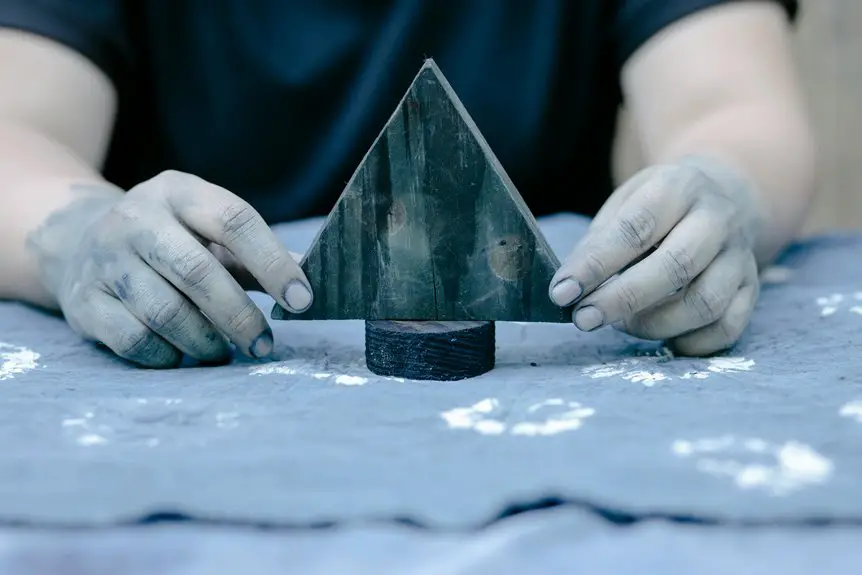When you order custom fabric printing in China, you start by choosing the right fabric based on use and budget, then prepare high-quality, compatible artwork. Next, you select a printing method like digital or screen printing. You review samples to guarantee color accuracy and print quality before full production begins. Quality checks continue through manufacturing and careful packaging. Shipping options and customs documents are handled to guarantee timely, smooth delivery. If you want to understand each step in detail, there’s more to uncover.
Table of Contents
Key Takeaways
- Select fabric type based on purpose and budget, considering texture, weight, and fiber for optimal print results.
- Prepare high-resolution artwork in CMYK, simplifying details and confirming file specifications with the supplier.
- Choose appropriate printing technique (digital, screen, dye sublimation) and approve fabric samples for color and quality accuracy.
- Oversee production with quality control on color matching, print alignment, durability, and wash resistance before mass printing.
- Coordinate customs documentation, monitor shipping timelines, inspect fabric quality on arrival, and address transit issues promptly.
Choosing the Right Fabric for Your Project
How do you choose the right fabric for your project? First, consider the purpose of your item—will it be clothing, home decor, or something else? This helps narrow down fabric types like cotton for breathability or polyester for durability.
Next, think about texture and weight; lightweight fabrics suit flowing garments, while heavier ones work for upholstery. Don’t overlook colorfastness and print quality, especially if vibrant designs matter to you.
Also, factor in your budget—natural fibers often cost more but feel premium.
Finally, check the fabric’s compatibility with printing methods available in China, like digital or screen printing, to guarantee your design transfers well.
Designing and Preparing Your Artwork
Creating a compelling design is essential when preparing your artwork for custom fabric printing. Start by ensuring your design matches the fabric’s texture and color to maintain vibrancy.
A compelling design that complements your fabric’s texture and color is key to vibrant custom prints.
Use high-resolution files—preferably vector formats like AI or EPS—to avoid pixelation. Keep your color palette consistent and work within the CMYK color mode since it aligns with most printing processes.
Simplify intricate details, as tiny elements may not print clearly on fabric. Always check your design’s dimensions to fit the fabric size accurately.
Finally, communicate with your supplier to confirm file specifications and any required adjustments.
Exploring Printing Techniques Available in China
When choosing custom fabric printing in China, you’ll find popular methods like screen printing, digital printing, and dye sublimation.
Each technique works best with specific fabric types, so understanding compatibility is key.
Plus, staying updated on the latest technology trends can help you get the best quality and efficiency for your project.
Popular Printing Methods
Although China offers a wide range of fabric printing options, some methods stand out for their quality and efficiency.
You’ll often encounter digital printing, which delivers vibrant colors and detailed designs quickly, making it perfect for small to medium runs.
Screen printing remains popular too, especially when you need bold, durable prints on large orders.
If you want a traditional touch, block printing offers unique textures but suits limited color palettes.
For intricate, multi-colored designs, rotary printing combines speed and precision, ideal for mass production.
Finally, dye sublimation is great for synthetic fabrics, providing long-lasting, vivid images.
Fabric Compatibility Options
Fabric compatibility plays a crucial role in choosing the right printing technique in China. When you’re selecting a fabric, you need to take into account its fiber content—cotton, polyester, silk, or blends—since each reacts differently to various printing methods.
For instance, screen printing works well on cotton but mightn’t suit delicate silks, while dye sublimation is perfect for polyester fabrics.
You’ll also want to reflect on fabric weight and texture; smooth, lightweight materials often yield clearer prints, whereas rough or heavy fabrics can affect ink absorption and detail.
Understanding these compatibility options helps you avoid issues like color fading or poor adherence. By matching your fabric with the appropriate printing technique, you guarantee vibrant, durable results tailored to your project’s needs.
Technology Trends in Printing
Choosing the right printing technique depends largely on the fabric you’re working with, but understanding the latest technology trends in China’s printing industry can further enhance your results.
Digital textile printing has surged in popularity due to its precision, speed, and ability to handle complex designs with vibrant colors. You’ll also find advancements in dye-sublimation printing, ideal for polyester fabrics, producing sharp, durable prints.
China’s manufacturers increasingly use eco-friendly inks and automated printing machines to boost efficiency and reduce waste.
Screen printing remains a strong choice for bulk orders, but now incorporates modern equipment to improve consistency.
Sampling and Proof Approval Process
When you order custom fabric printing in China, the process starts with creating a sample to verify your design looks just right.
You’ll review a proof and give your approval before full production begins. This step helps you catch any issues early and assures you get exactly what you want.
Sample Creation Steps
Although creating a sample might seem straightforward, the process requires careful attention to detail to confirm your design translates perfectly onto fabric.
First, you’ll provide your finalized artwork and specify fabric type, colors, and print technique. The printer will then prepare digital or physical mock-ups to align with your vision.
Next, they’ll produce a small fabric swatch or sample that matches your order specifications, using the chosen printing method. This sample allows you to check color accuracy, fabric feel, and print quality before mass production.
Throughout this step, you should communicate promptly with the printer to address any adjustments. By staying involved during sample creation, you confirm the final product meets your expectations and avoid costly errors later in the process.
Proofing and Approval
Before moving forward with full production, you’ll need to carefully review and approve the sample to confirm it meets all your specifications.
This proofing stage is vital because it lets you check color accuracy, fabric quality, and print details firsthand.
When you receive the sample, inspect it under proper lighting and compare it to your original design files.
If you spot any issues, communicate them clearly to the manufacturer for adjustments.
Don’t hesitate to request a revised sample if needed.
Once you’re fully satisfied and give your approval, the printer will proceed with mass production.
This step guarantees your final product matches your vision, reducing the risk of costly errors and delays.
Taking time here saves you headaches down the line.
Production and Quality Control Measures
Assuring superior quality starts with a streamlined production process tailored to your custom fabric printing needs.
Once your design is approved, the fabric is carefully prepared and printed using advanced machinery to guarantee vibrant colors and sharp details.
Throughout production, rigorous quality control checks help catch any inconsistencies early on, assuring the final product meets your expectations.
Key quality control measures include:
- Continuous color matching to maintain design accuracy
- Inspection of fabric texture and print alignment to avoid defects
- Testing durability and wash resistance to assure long-lasting prints
Packaging, Shipping, and Delivery Options
After confirming the quality of your custom fabric prints, attention turns to how your order is packaged and delivered.
Your supplier carefully rolls or folds the fabric to prevent wrinkles and damage, then wraps it in protective materials like plastic or kraft paper. For added security, some providers use waterproof packaging or custom-labeled boxes.
When it comes to shipping, you can choose from options like air freight for speed or sea freight for cost efficiency. Express courier services such as DHL or FedEx are also common for smaller orders.
Make certain you discuss delivery timelines and tracking availability upfront. Clear communication with your supplier about shipping preferences and customs documentation will guarantee your fabrics arrive on time and in perfect condition.
Frequently Asked Questions
What Are the Environmental Impacts of Fabric Printing in China?
You’ll see rivers tinted with dye and factories releasing smoky plumes. Fabric printing in China often consumes tons of water and chemicals, polluting ecosystems and harming wildlife, so you should consider eco-friendly alternatives to reduce this impact.
How Do Customs Regulations Affect Fabric Imports From China?
You’ll face customs regulations that impact duties, tariffs, and required documentation when importing fabric from China. These rules can delay shipments or increase costs, so you must guarantee compliance to avoid fines or confiscation.
Can I Visit the Printing Factory During Production?
You can usually visit the printing factory during production, but it depends on the company’s policy. It’s best to schedule your visit in advance, so they can prepare and guarantee safety and smooth operations while you’re there.
What Payment Methods Are Accepted for Custom Fabric Orders?
You can usually pay via bank transfer, PayPal, or credit card for custom fabric orders. Some factories also accept Western Union or Alibaba’s secure payment system. Always confirm payment options before placing your order.
Are There Minimum Order Quantities for Custom Fabric Prints?
Yes, most suppliers require minimum order quantities for custom fabric prints. You’ll usually find these minimums vary by fabric type and printing method, so it’s best to check with your chosen manufacturer before placing an order.
- A Crafter’s Guide to Kona Cotton Fabric by the Yard, Bolt, and Precuts - June 20, 2025
- Kona Snow vs. White: Which Fabric Shade Is Right for Your Project? - June 20, 2025
- Where to Buy Kona Cotton Fabric: An Online and In-Store Guide - June 20, 2025





